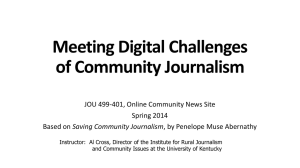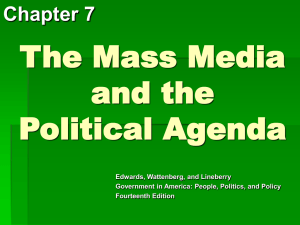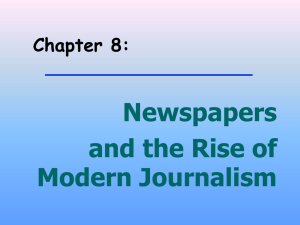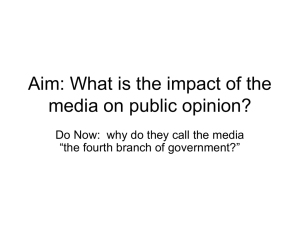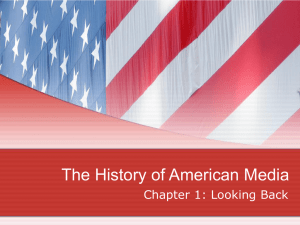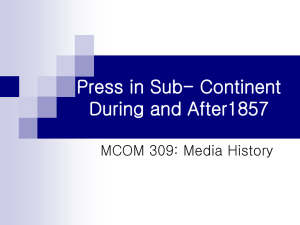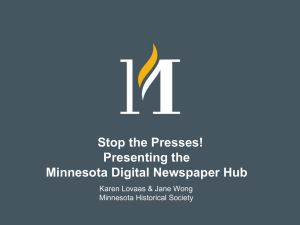feature-of-early-urdu-press
advertisement
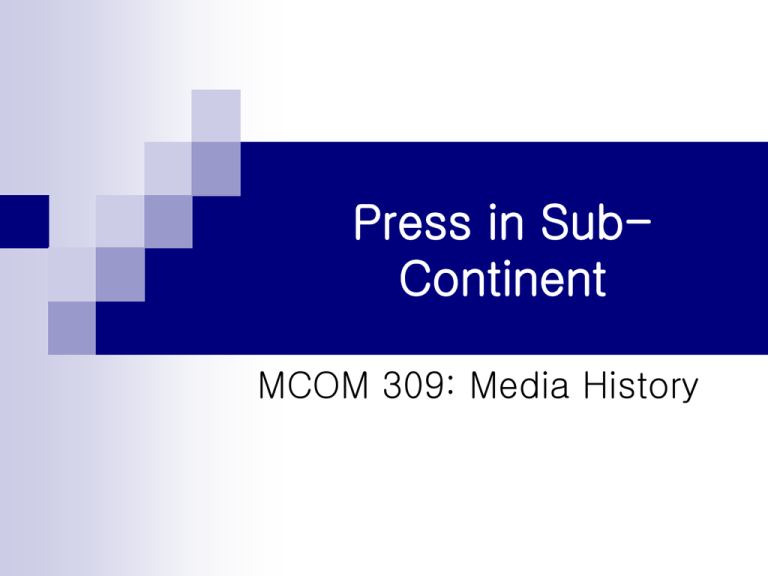
Press in SubContinent MCOM 309: Media History First newspapers The first printed newspaper of sub-continent appeared in 1780, “Hicky Gazette”, published by James August Hicky. November 1781, a newspaper with name of “India Gazette” was introduced which was pro Government and against Hickey With this haphazard changing scenario, many new newspapers came on the scene. Some supported the government and others strived for freedom Indian World William Duane was one of those editors who struggled hard for freedom of press. He was a fanatical editor of Bengal Journal, but the government violently removed him with force. He started his own newspaper, “Indian World” which was more authentic and openly critical to East India Company. The British released two consecutive newspapers to combat it, but failed. Indian World Circulation of Indian World increased more than expectations. It was alarming for the Company that this Indian paper could get to England and may defame the Company in England. William Duane once criticized on judiciary; therefore, he was exiled and his investment of thirty thousand was seized by force. He was a valiant journalist. He went to America through England and continued his practice. Progress & Development Within twenty years of the installation of printing press in sub-continent, dozens of (English language) newspapers and periodicals appeared in the cities of Calcutta, Bombay and Madras. Readership was limited to British because of language. These newspapers in general included poetry, tales, and short compositions, translated Persian stories and sometime even the translated odes of native-poets Sadi and Hafiz. They brought to light the culture, qualities and Newspapers of Lahore First Urdu newspaper of Lahore was “Koh-eNoor”, started in 1850. Continued for more than half a century. Munshi Harsukh Raey was its founder who was specially called by the British after invasion in Punjab. He was financially supported by British in establishing a printing press and a newspaper. It was a pro Government newspaper, but keeping the idea of freedom under the umbrella of force, it sometime criticized the government also. Newspapers of Lahore It provided not only news and views, but enormous educative material for educators. Koh-e-Noor had largest circulation in all the Urdu papers of the sub-continent. In fifty years of its existence, a various editors worked for its betterment. The second chief newspaper of Lahore was “Darya-e-Noor” which could not continue because it openly condemned the British rule. It had a very short but lively life. Characteristic of Urdu Journalism In early stages of journalism, the readership of Urdu newspapers was not very remarkable. Statistical information tells that Koh-e-Noor had highest circulation with three hundred and fifty copies a day. Syed-ul-Akhbar had the lowest circulation of only twenty seven copies. Majority of the newspapers produced nearly fifty copies per day. Some papers even sold two hundred copies because the British used to take fifty to hundred copies for officials and schools on permanent basis. Characteristic of Urdu Journalism The reason behind low readership was that most newspapers at that time cost fifty cents (8 aaney) per copy. We can safely assume that only well-off people were able to afford. Secondly, literacy rate was considerably low. At least forty customers were required to make self-govern (independent) a weekly. Regional, national and international news were published. News of educational reforms had exceptional emphasis in Urdu newspapers. Characteristic of Urdu Journalism Sources of news were other hand-written news sheets of emperor’s stringers, English newspapers and contemporary Urdu and Persian newspapers. Editorials were not included. Notes or comments were given at the end of columns. Editor’s suggestions and interpretations were also put in under separate column. Newspapers were not very goof-looking or impressive. Pictures were not used, however, a little bit; hand-made pictures were printed sometimes. Characteristic of Urdu Journalism Newspapers had no well arrange material in order or sequence. Koh-e-Noor was the only Urdu newspaper, in which material was arranged in a definite series. One most enhanced quality of Koh-e-Noor was printing of annual Index, through which concerned news items could be easily searched out. Not all Urdu newspapers criticized the government.
